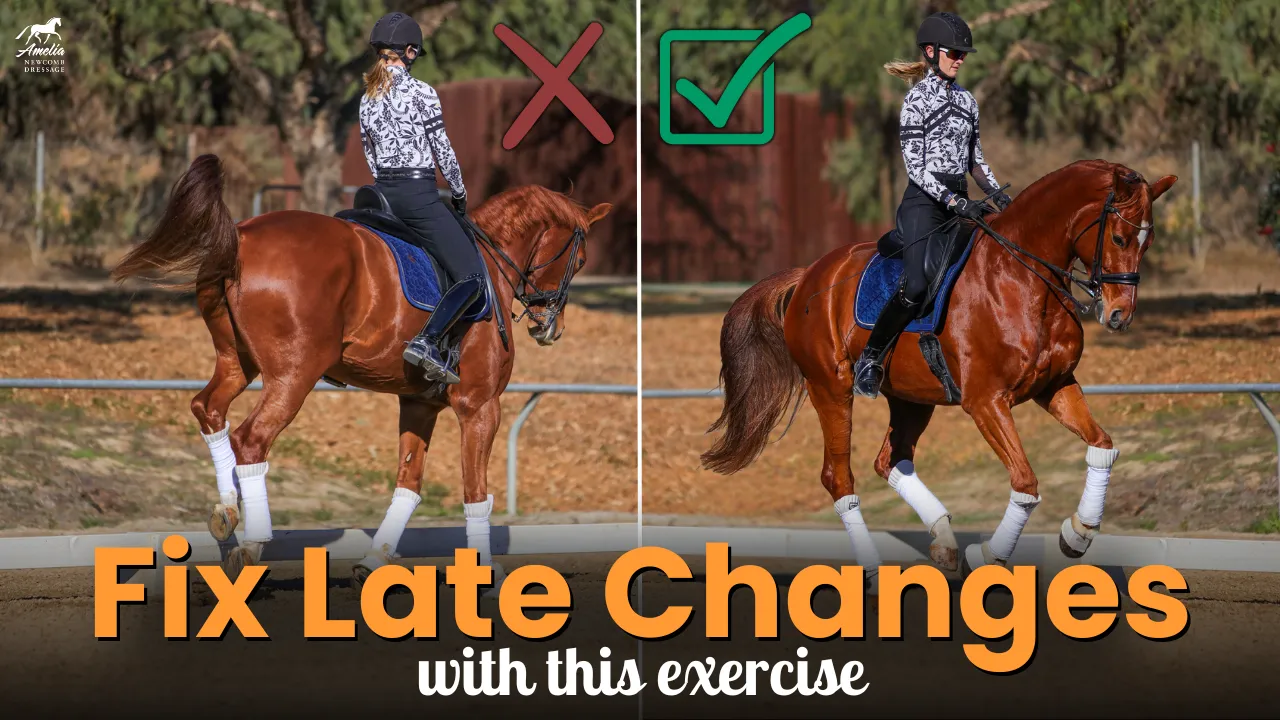Canter is one of the most fun gaits to ride, but it’s not always easy. Before we get into this week’s video, I wanted to quickly remind you that my 30-Day Canter Challenge is starting tomorrow! Whether you’re working with a green horse, cantering for the first time, or just trying to fix a few issues, this Challenge will help you. Inside the Canter Challenge, I have put together everything you need to ride the canter of your dreams. Join the Challenge here.
Ok, now on to the video! In this video, I’m sharing clips from a clinic I taught to show you how to solve three common canter problems.
Each of these riders was facing a different challenge: one horse was picking up the wrong lead, another struggled to stay round in the canter, and a third tended to lose activity in the canter. If you’ve experienced any of these issues, you’re not alone! Here is what I worked on with each student:
1. Wrong Lead
One rider was struggling with her horse picking up the wrong canter lead. In our lesson together, we focused on better preparation for the transition. That meant bending, turning, and activating the inside hind leg to set the horse up for the correct lead. It’s all about setting the stage before you ask—if your horse isn’t balanced or supple, they’re more likely to default to the wrong lead.
2. Losing Roundness in the Canter
Another rider had trouble keeping her horse round and connected in the canter. The canter was rushed and unbalanced, and the horse’s head would pop up. To fix it, we slowed everything down and incorporated the Snowman exercise—a large 20-meter circle connected to a smaller 10-meter circle in the opposite direction. This is one of my favorite patterns to improve bend, balance, and suppleness in the canter.
3. A Sluggish Canter
The third rider had a horse that lacked energy and rhythm in the canter. To address this, we focused on creating a quicker tempo using a shallow loop serpentine in First Level Test 3. This helped develop a rounder frame, a better balanced canter and a more active hind leg. We also practiced quick transitions to help keep the horse responsive and engaged.
One of the key takeaways from this video is that horses aren’t born with a perfect, balanced, connected canter. It’s something we train. And that’s exactly why I created the 30-Day Canter Challenge—a complete program that guides you step by step through preparing for, developing, and improving the canter.
I hope this video helps you and your horse with your canter!
Happy Riding!
Amelia
P.S. Need more help with your canter? Don’t forget to check out my 30-Day Canter Challenge! The challenge officially starts tomorrow, and I don’t want you to miss out on this opportunity. Click here to learn more and join today.












































